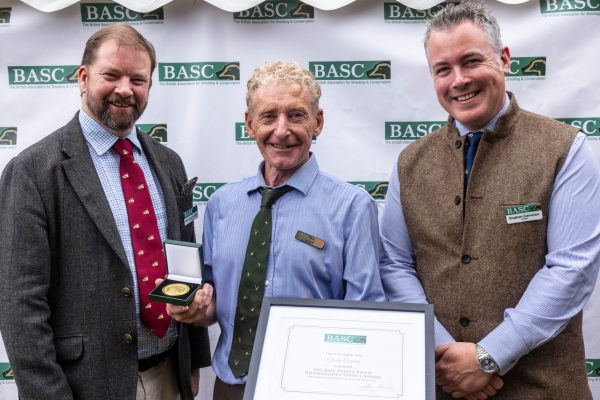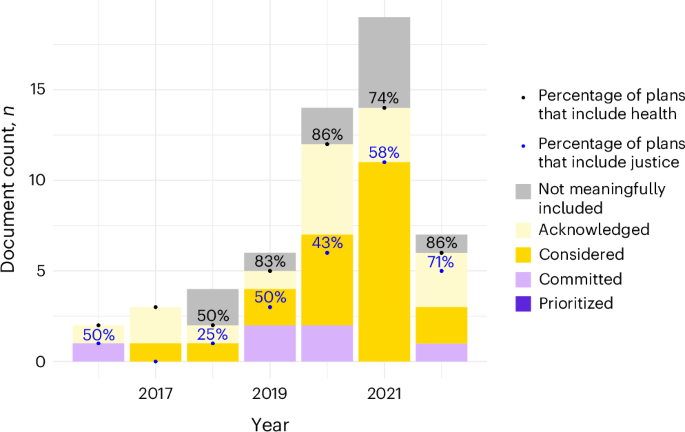The window is now open for you to nominate someone you think worthy of recognition as part of BASC’s Honours and Awards 2026.
Do you know someone in your network who devotes considerable time and effort to support shooting and…

The window is now open for you to nominate someone you think worthy of recognition as part of BASC’s Honours and Awards 2026.
Do you know someone in your network who devotes considerable time and effort to support shooting and…


City plans not only involve specific regions and income classes but also substantive themes. Thus, each city plan was analyzed based on (1) dimensions of health, (2) equity and (3) implementation readiness.
Health was divided…

The conference call will be hosted by Gilles Andrier, Chief Executive Officer and Stewart Harris, Chief Financial Officer.

Pre-registration for tickets begins on 8 January. A “full madness pass” covering all three days of the festival will cost 12,500 baht ($400; £300) while a single-day pass is going at 5,100 baht.
More details on the festival’s theme and line-up will follow soon, organisers said.
Although the Tomorrowland group has held events in some Asian cities, this is the first time it will be holding an entire festival in the continent, and one that is similar to the scale of what it does in Belgium.
Thailand finalised an agreement with Tomorrowland to host the event for five years and expects it to generate 21bn baht ($673m; £497m) over the period, Thai media reported.
“Expanding Tomorrowland to a new continent is a milestone we approach with great respect and excitement… This is the beginning of a long-term story,” said Tomorrowland’s chief executive officer Bruno Vanwelsenaers.
In recent years, Thailand has become a strong contender in the live music scene. Last year, it played host to international music festivals like Electric Daisy Carnival and Creamfields. Bangkok was also a stop on K-pop band Blackpink’s world tour last October.
And the country’s homegrown music and arts festival Wonderfruit is emerging as a hot destination on the festival circuit, drawing tens of thousands of people each year.

SAVE $140: As of Jan. 6, the Kindle Scribe is on sale for $309.99 at Amazon. That’s a discount of 31% on the list price.
The European Bank for Reconstruction and Development (the “EBRD” or the “Bank”), within its Green Economy Transition (“GET”) approach, is committed to scale up financing of projects that advance the transition to environmentally sustainable, low-carbon economies in its Countries of Operation (“CoO”), including advanced and innovative renewable energy solutions.
Besides mature ground-mounted applications, floating solar PV power plants are becoming increasingly popular as costs continue to fall and the interest of reducing land use starts to grow. Quite a few floating applications have become operational or are under construction around the world, ranging in size from a few MW to hundreds of MW each (the biggest currently in operation is the 1 GW Dongying Offshore Floating Solar Farm in China). The total cumulative capacity will likely exceed 10 GW by the end of 2025, driven heavily by large projects in the Asia-Pacific region (China, India, Indonesia). The project pipeline exceeds 60 GW, indicating significant planned growth.
Floating PV has the advantage of performing better in hot and humid ambient conditions in comparison with ground-mounted plants due to the combined effect of water and wind cooling on panels and cables. Additionally, floating PV has been found to contribute to water conservation due to the ability to reduce water evaporation and algae growth.
The present study specifically focuses on the viability of developing a cumulative floating PV capacity of up to 3,000 MW over the surface of [3] lakes (the “Projects”).
The ability to rely on the related existing high-voltage grid infrastructure for the Projects would be an obvious technical and economic advantage. The lakes have a vast theoretical potential for floating PV – in this sense, the choice of the location and design capacity of the Projects is expected to be driven by technical, economic, environmental and considerations on other existing uses of the reservoirs, while still being large enough to be potentially meaningful in terms of electricity production and replicability of the concept.
As an important side benefit, the Projects might help increasing the water available downstream of the lakes for irrigation and civil uses, thanks to its possible contribution to reducing water evaporation losses. At the same time, the study will carefully consider the possible environmental and social risk and impacts associated with of the Projects including impacts to biodiversity and the local ecosystem, as well as lakes users including irrigation, fishing and recreational activities, energy production, etc., and how these can be addressed and mitigated in line with good international practice.
The Consultant will be guided by the environmental and social issues considered in EBRD’s Environmental and Social Policy and its associated Performance Requirements.
The main objective of the assignment is to study and identify the main technical characteristics of the Projects to ensure they meet best international practice, minimise technical, environmental and social risks.
The main tasks of the study are to support the EBRD and the relevant stakeholders in Türkiye in defining the main features of the Projects, including the overall size and potential locations in each lake, the anticipated investment costs and electricity production estimates, the identification of the main preliminary technical specifications as well as any regulatory or market issues that need to be addressed for the implementation of the Projects.
The main Counterparts for the assignment will be the Ministry of Energy and Natural Resources, the Electricity Generation Company (EUAS) and the Turkish Electricity Transmission Company (TEIAS).
The countdown is over and Scotland’s new national radio station is finally here…
At 8am this morning (Tuesday 6 January), legendary radio duo Ewen Cameron and Cat Harvey officially launched STV Radio live from the station’s shiny new studio…